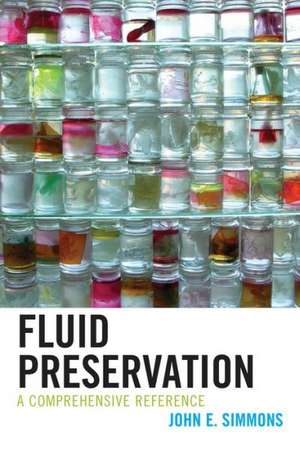Fluid Preservation
Autor John Simmonsen Limba Engleză Hardback – 15 mai 2014
Preț: 875.29 lei
Preț vechi: 1199.03 lei
-27% Nou
Puncte Express: 1313
Preț estimativ în valută:
167.48€ • 174.87$ • 138.62£
167.48€ • 174.87$ • 138.62£
Carte tipărită la comandă
Livrare economică 04-18 aprilie
Preluare comenzi: 021 569.72.76
Specificații
ISBN-13: 9781442229655
ISBN-10: 1442229659
Pagini: 364
Ilustrații: illustrations
Dimensiuni: 157 x 229 x 30 mm
Greutate: 0.66 kg
Ediția:New.
Editura: Rowman & Littlefield
ISBN-10: 1442229659
Pagini: 364
Ilustrații: illustrations
Dimensiuni: 157 x 229 x 30 mm
Greutate: 0.66 kg
Ediția:New.
Editura: Rowman & Littlefield
Notă biografică
John Simmons holds a B.A. in systematic ecology and an M.A. in Historical Administration and Museum Studies. In 1986, he completed the Collections Care Pilot Training Program (funded by the Bay Foundation) to become one of 30 people in the country to receive specialized training in conservation and collections care. He has spent a total of 30 years as collections manager in two of the largest collections of fluid preserved specimens in the United States (the California Academy of Sciences and the Biodiversity Research Center at the University of Kansas). He has published extensively on collections care topics and conducted seminars, workshops, and training programs in the US, Latin America, Asia, the Middle East, and Europe on the care of natural history collections (his previous publications include the AAM standard reference on collections management policies).
Descriere
Despite the fact that fluid preservation has been practiced for more than 350 years, this is the only handbook that summarizes all that is known about this complex and often confusing topic. Fluid Preservation: A Comprehensive Reference covers the history and techniques of fluid preservation and how to care for fluid preserved specimens in collections.
